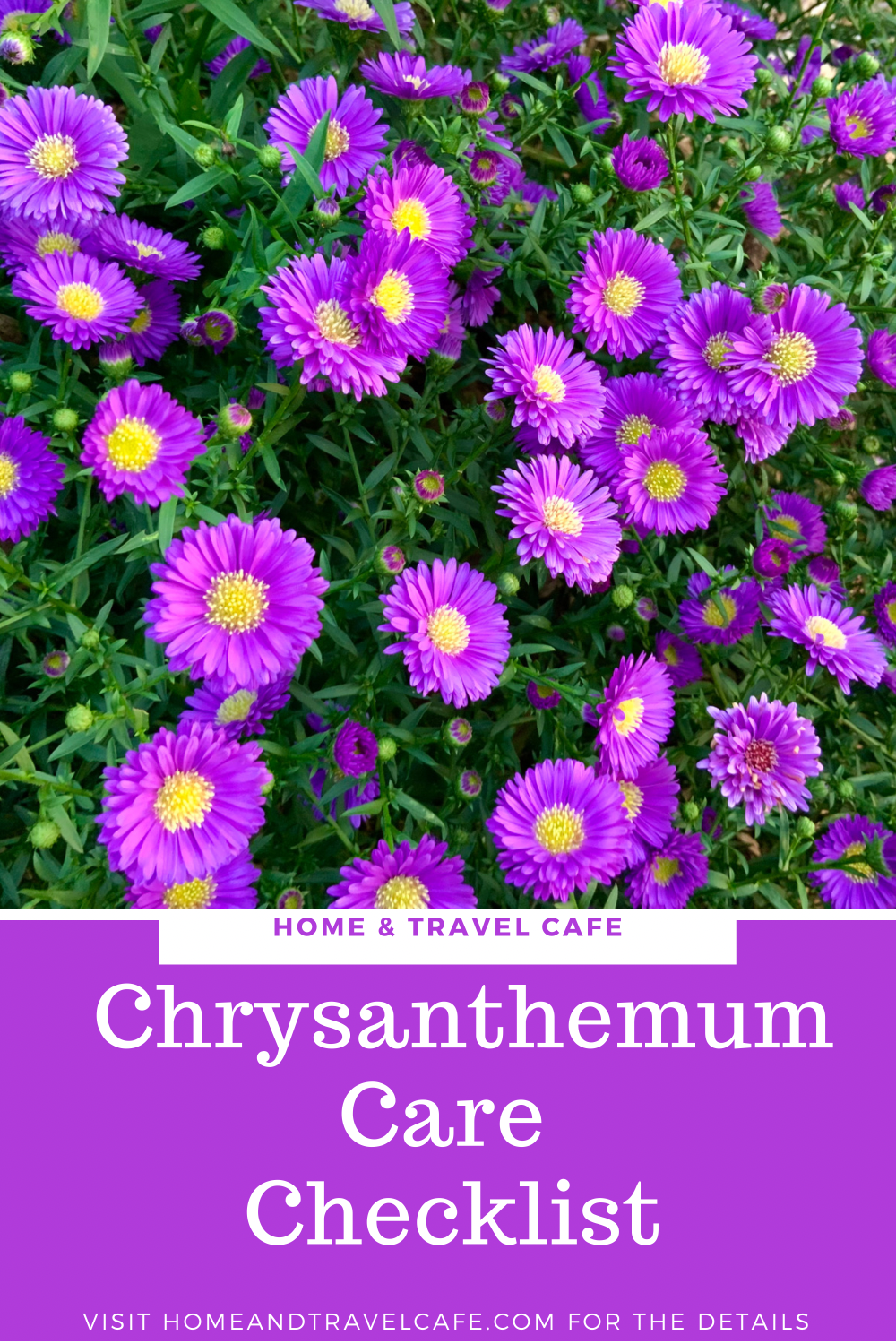My favorite fall flowers are chrysanthemums. I love their cheerful blooms and colors! I have a couple that come back year after year. Today I have a post from my friend Sargam with a Chrysanthemum care checklist to help you grow these cheery flowers successfully year after year.

A guide to making your Mums last long
Chrysanthemum, also known as mumingtons or chrysanths, are Fall Flowering Favorites. Originally yellow, they are named after the Greek words “chrysos” (gold) and “anthemon” (flower).
Are chrysanthemums perennial?
Most varieties are East Asian or Europian, where these fragrant florals are herbaceous perennials. Around late summer, most garden centers carry many varieties of mums for sale.
Potted mums are often treated as annuals and discarded in the winter.
However, there are several varieties of perennial Mums that can return year after year.
How to care for chrysanthemums-Chrysanthemum Care Checklist
Hardy Chrysanthemums aren’t hard to care for. These jewel-toned beauties provide pops of color to the landscape and grow just in time to cover all the dying Spring blooms. This chrysanthemum care checklist will help you care for all different types of chrysanthemums
The best time to plant chrysanthemums
Don’t fret if you didn’t get a chance to plant your Chrysanthemums in Spring. If you follow this guide carefully, you can plant them as late as August (or even September in most areas) and overwinter them successfully. The only difference being, if planted in Spring, the shrubs get enough time to establish themselves throughout Summer and have a solid foundation to survive colder months.
Checklist to overwinter mums
The best way to ensure any plant can overwinter is to give it optimal conditions for growth. With suitable soil rich in nutrients, and the perfect planting site, you can preserve your mums year after year.
The best soil for Chrysanthemums
As soon as you buy potted mums in August, prepare the soil and plant them to give them maximum time to establish before the first frost.
Mums prefer soil with a slightly acidic pH. Prepare the soil, so it is well-draining by mixing peat moss. Mums are prone to fungal infections and root rot if left in stagnant water.
GROW TIP: Provide the roots and crown of the plant extra protection by mulching the soil about 5 inches and leaving any dead foliage on until Spring.
The best compost for Chrysanthemums
Mums like soil that is rich and humusy. Prepare your planting site by adding rooting hormone along with water to the planting hole before placing your Mum in it. The best time to fertilize Mum’s is early Spring. Make sure to add amendments rich in nitrogen and potassium to promote healthy growth all Spring and summer so the buds can set in later on.
GROW TIP: Try using a fertilizer that is 12-6-6 to maximize benefits for your Mum.
The best location for Chrysanthemums
These plants do best in full sun; they push out maximum blooms when they are in a spot that gets morning to afternoon sun but late afternoon shade.
GROW TIP: Make sure to plant your mums away from a streetlight, patio, or window, the buds set in accordance with day length so nighttime light may confuse the Mum.
The best way to get Chrysanthemum Flowers
The natural chrysanthemum bloom time is Spring through Fall. Because of their ability to bloom through the end of summer, you can delay buds from opening by pinching them back in early July. This will encourage the plant to push out more buds and ensure the mums bloom later in the season.
GROW TIP: Mums are great at pest control; the leaves are often used in natural pest repellants.
We hope you consider overwintering your Mum’s this Fall; let us know if you have any questions in the comments below.
Written by Sargam Merchant
for Home & Travel Cafe by Linette

 Follow
Follow